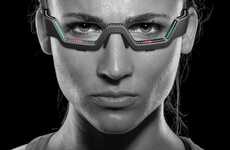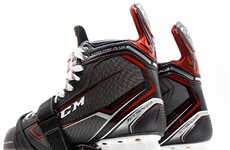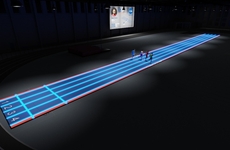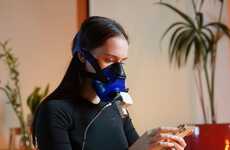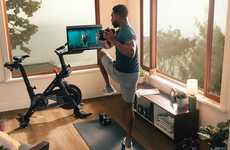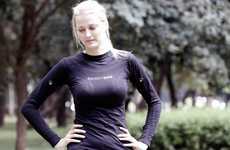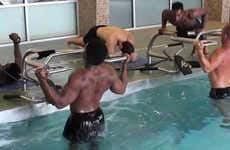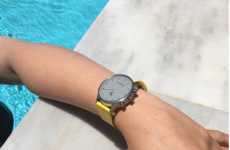
General Electric Helps Olympians Improve Training with Biometric Sensors
Hayley McGlone — August 8, 2016 — Special
General Electric is using biometric sensors to help athletes monitor their training performance.
The athletes are able to use the biometric sensors and LEDs to outline their performances with light. The sensors track an athlete's acceleration, muscle activity and heart rate while performing. To capture all the athletes' movements, GE added LE lights to the biometric sensors so that it looks like the athletes are painting with their movements. The information from the sensors is converted into analogue information to be seen as red, green and blue LED lights. The athletes' performances were recorded with long-exposure photography and the LED light animations were added in slow-motion shots.
Athletes are able to use the recorded information to see which parts of their routine causes their heart rate to spike or uses the most muscle activity.
The athletes are able to use the biometric sensors and LEDs to outline their performances with light. The sensors track an athlete's acceleration, muscle activity and heart rate while performing. To capture all the athletes' movements, GE added LE lights to the biometric sensors so that it looks like the athletes are painting with their movements. The information from the sensors is converted into analogue information to be seen as red, green and blue LED lights. The athletes' performances were recorded with long-exposure photography and the LED light animations were added in slow-motion shots.
Athletes are able to use the recorded information to see which parts of their routine causes their heart rate to spike or uses the most muscle activity.
Trend Themes
1. Biometric Sensors in Training - The use of biometric sensors in training can improve athlete's performance and identify areas for improvement.
2. LED Light Visualization - Using LED lights to visualize athlete's movements can provide a unique training perspective and help athletes analyze their performance.
3. Long-exposure Photography in Sports Training - Long-exposure photography can provide a new way to analyze and improve athletic performance while also creating stunning visualizations.
Industry Implications
1. Sports Technology - Technology companies can partner with sports organizations to develop biometric sensors and other training tools to improve athlete's performance.
2. Photography and Videography - Photography and videography companies can offer their services to capture and visualize athlete's performances using biometric sensors and LED lights.
3. Health and Fitness - The use of biometric sensors in training can also be applied in the health and fitness industry to help individuals track their progress and improve their performance.
1.9
Score
Popularity
Activity
Freshness




